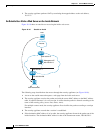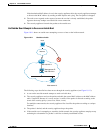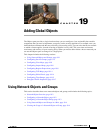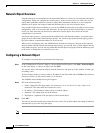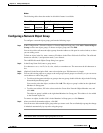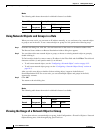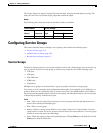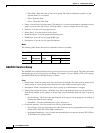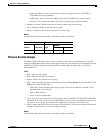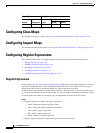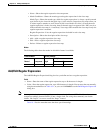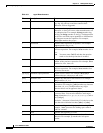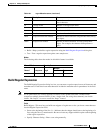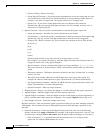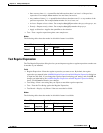
19-6
Cisco ASDM User Guide
OL-16647-01
Chapter 19 Adding Global Objects
Configuring Service Groups
–
Filter field—Enter the name of the service group. The wildcard characters asterisk (*) and
question mark (?) are allowed.
–
Filter—Runs the filter.
–
Clear—Clears the Filter field.
• Name—Lists the service group names. Click the plus (+) icon next to the name to expand the service
group so you can view the services. Click the minus (-) icon to collapse the service group.
• Protocol—Lists the service group protocols.
• Source Ports—Lists the protocol source ports.
• Destination Ports—Lists the protocol destination ports.
• ICMP Type—Lists the service group ICMP type.
• Description—Lists the service group descriptions.
Modes
The following table shows the modes in which this feature is available:
Add/Edit Service Group
The Add/Edit Service Group dialog box lets you assign services to a service group. This dialog box name
matches the type of service group you are adding; for example, if you are adding a TCP service group,
the Add/Edit TCP Service Group dialog box is shown.
Fields
• Group Name—Enter the group name, up to 64 characters in length. The name must be unique for all
object groups. A service group name cannot share a name with a network object group.
• Description—Enter a description of this service group, up to 200 characters in length.
• Existing Service/Service Group—Identifies items that can be added to the service group. Choose
from already defined service groups, or choose from a list of commonly used port, type, or protocol
names.
–
Service Groups—The title of this table depends on the type of service group you are adding. It
includes the defined service groups.
–
Predefined—Lists the predefined ports, types, or protocols.
• Create new member—Lets you create a new service group member.
–
Service Type—Lets you select the service type for the new service group member. Service types
include TCP, UDP, TCP-UDP, ICMP, and protocol.
–
Destination Port/Range—Lets you enter the destination port or range for the new TCP, UDP, or
TCP-UDP service group member.
Firewall Mode Security Context
Routed Transparent Single
Multiple
Context System
• • • •—



